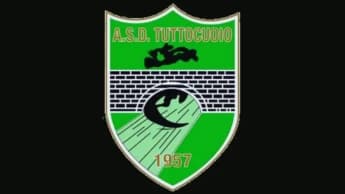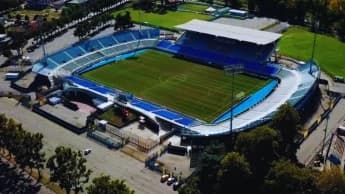
A Century of History, Drama, and Unwavering Support in Tuscany’s Iconic Stadium
Nestled in the historic city of Pisa, Arena Garibaldi—Stadio Romeo Anconetani, commonly known as Arena Garibaldi or Cetilar Arena for sponsorship reasons, stands as a testament to the enduring passion and resilience of Italian football. Since its inauguration in 1919, the stadium has been the home of Pisa Sporting Club, one of Tuscany’s most beloved teams. With a rich history, a capacity of 25,000 (currently limited to 14,869 for safety reasons), and a unique atmosphere, Arena Garibaldi is more than just a football ground—it is a symbol of community pride and footballing heritage.
A Historic Venue: The Origins of Arena Garibaldi
Arena Garibaldi was inaugurated in 1919, making it one of the oldest football stadiums in Italy. Originally designed as a multi-purpose venue, it quickly became the heart of Pisa Sporting Club, hosting countless matches and becoming a focal point for the city’s footballing culture. Over the decades, the stadium has undergone numerous renovations, evolving to meet modern standards while retaining its historic charm.
The stadium’s name reflects its deep connection to the city and its footballing history. In 2001, it was renamed Stadio Romeo Anconetani in honor of the legendary former president of Pisa S.C., who led the club to its most successful period in the 1980s. Anconetani’s leadership saw Pisa rise to Serie A and compete in European competitions, leaving an indelible mark on the club and its supporters. The renaming of the stadium was a fitting tribute to his legacy, ensuring that his contributions would never be forgotten.
In 2024, the stadium entered a new chapter with the introduction of a sponsorship agreement, leading to its temporary renaming as Cetilar Arena for the 2024–25 Serie B season. This move reflects the growing trend of commercial partnerships in football while maintaining the stadium’s historic identity and connection to the community.
Architectural Charm: A Blend of Tradition and Modernity
Arena Garibaldi’s design is a perfect blend of tradition and modernity. The stadium’s compact layout ensures that fans are close to the pitch, creating an intimate and electric atmosphere on matchdays. The four stands—Curva Nord, Curva Sud, Distinti, and the main grandstand—each contribute to the unique character of the venue.
The Curva Nord is the heart of the stadium’s atmosphere, home to Pisa’s most passionate ultras. This section is known for its vibrant displays, choreographed chants, and unwavering support, making it the driving force behind the team’s home advantage. The main grandstand offers modern amenities, including seating for VIPs, club officials, and the press, while the Curva Sud and Distinti stands provide additional seating for fans.
One of the most striking features of Arena Garibaldi is its location within the city of Pisa. Unlike many modern stadiums built on the outskirts of urban areas, Arena Garibaldi is situated near the historic center, allowing fans to experience the city’s rich culture and landmarks, such as the iconic Leaning Tower of Pisa, before and after matches. This integration into the cityscape adds to the stadium’s unique appeal and makes it a special destination for football fans and visitors alike.
The Atmosphere: A Fortress of Passion
Arena Garibaldi is renowned for its passionate and electric atmosphere, particularly on matchdays when Pisa Sporting Club takes the field. The stadium’s compact design and proximity of the stands to the pitch create an intense and immersive experience, allowing fans to feel every moment of the action. The noise levels can be deafening, especially during key matches, as the loyal supporters chant in unison, waving banners and flags that fill the stadium with club colours.
The Curva Nord is the epicentre of this atmosphere, where Pisa’s most dedicated ultras gather to create an intimidating environment for visiting teams. Their relentless support, choreographed displays, and vocal backing inspire the team and make Arena Garibaldi a fortress for the home side. The passion in the Curva Nord spreads to the rest of the stadium, creating a unity among the fans that is unmatched.
The fan experience extends beyond the 90 minutes of play, as matchdays in Pisa are deeply connected to the city’s culture and traditions. Before games, supporters often gather in local cafés, bars, and restaurants near the stadium, enjoying the pre-match build-up in a way that reflects the Italian football experience. The stadium’s location within the city allows for easy access, allowing fans to blend football with sightseeing, especially with Pisa’s historic landmarks just a short walk away.
Notable Moments: A Stage for Drama and Triumph
Arena Garibaldi has been the stage for many unforgettable moments in Pisa Sporting Club’s history. From dramatic promotions to thrilling encounters, the stadium has witnessed the highs and lows of the club’s journey, leaving a lasting impact on fans.
One of the most memorable periods in the stadium’s history came during the 1980s under the leadership of Romeo Anconetani. During this era, Pisa secured promotion to Serie A and competed against some of the biggest clubs in Italian football. The stadium was packed with passionate fans as Pisa took on legendary teams such as Juventus, AC Milan, and Inter Milan, creating unforgettable atmospheres. These years saw the club not only establish itself in the top flight but also compete in European competitions, including the Mitropa Cup, which Pisa won twice in 1985 and 1988.
The stadium has also been the site of numerous dramatic promotion battles. One of the most significant moments came in 2007 when Pisa secured promotion to Serie B after an intense playoff campaign. The decisive match against Monza saw an outpouring of emotion from the stands as fans invaded the pitch to celebrate their team’s return to the second tier of Italian football. More recently, in 2019, another thrilling promotion was sealed at Arena Garibaldi when Pisa triumphed in the Serie C playoffs, once again sparking euphoric celebrations.
Beyond club football, the stadium has also hosted international fixtures, including matches involving Italy’s youth teams. These games have allowed the people of Pisa to witness future stars of Italian football in action. The stadium’s ability to generate a passionate atmosphere has made it an ideal venue for such events, showcasing the enthusiasm of local supporters.
Records and Legacy: A Symbol of Pride and Resilience
Arena Garibaldi holds a unique place in Italian football history, not just as the home of Pisa Sporting Club but as a venue that has witnessed remarkable records and unforgettable achievements. Over the decades, the stadium has been the setting for Pisa’s greatest triumphs, hosting legendary players and pivotal matches that have shaped the club’s identity.
One of the most significant records associated with the stadium is Pisa’s impressive home form during their golden era in the 1980s. Under the ownership of Romeo Anconetani, the team turned Arena Garibaldi into a fortress, achieving notable victories over some of Italy’s biggest clubs. During their Serie A campaigns, the stadium saw Pisa defeat giants such as Juventus, AC Milan, and Inter Milan, moments that remain etched in the memories of supporters. These victories highlighted the team’s resilience and made the stadium a feared destination for visiting sides.
In terms of individual records, Arena Garibaldi has been graced by some of the finest talents to have worn the Pisa jersey. Among the club’s most legendary figures is Dutch striker Wim Kieft, who played a crucial role in Pisa’s Serie A campaigns and left a lasting legacy with his goal-scoring exploits. The stadium also hosted future stars such as Diego Simeone and Dunga, who went on to become icons in world football. Their time at Pisa added prestige to the club and demonstrated the stadium’s role in developing top-tier talent.
The legacy of Arena Garibaldi is deeply intertwined with the identity of Pisa Sporting Club. The stadium is more than just a football ground—it is a symbol of tradition, resilience, and the unwavering support of the fans. Despite modernization efforts and capacity restrictions, it has retained its historic charm and remains one of Italy’s most atmospheric football venues. The renaming of the stadium in 2001 to honor Romeo Anconetani was a fitting tribute to a man who dedicated his life to the club, ensuring that his legacy would forever be linked to Pisa’s footballing home.
Looking Ahead: The Future of Arena Garibaldi
As Pisa Sporting Club continues its journey, Arena Garibaldi remains at the center of the club’s ambitions. The stadium’s rich heritage and passionate fanbase ensure that it will continue to be a place where history is made, records are broken, and memories are created. With plans for further renovations and improvements, Arena Garibaldi is poised to remain a fortress of passion and pride for future generations.
In a world where modern stadiums often lack the character and history of their predecessors, Arena Garibaldi stands as a reminder of the enduring power of football to unite communities and inspire generations. For Pisa Sporting Club and its supporters, the stadium is more than just a venue—it is the heartbeat of their footballing passion.





